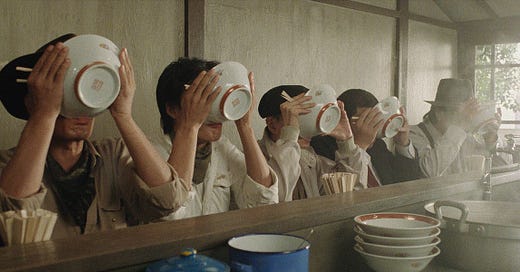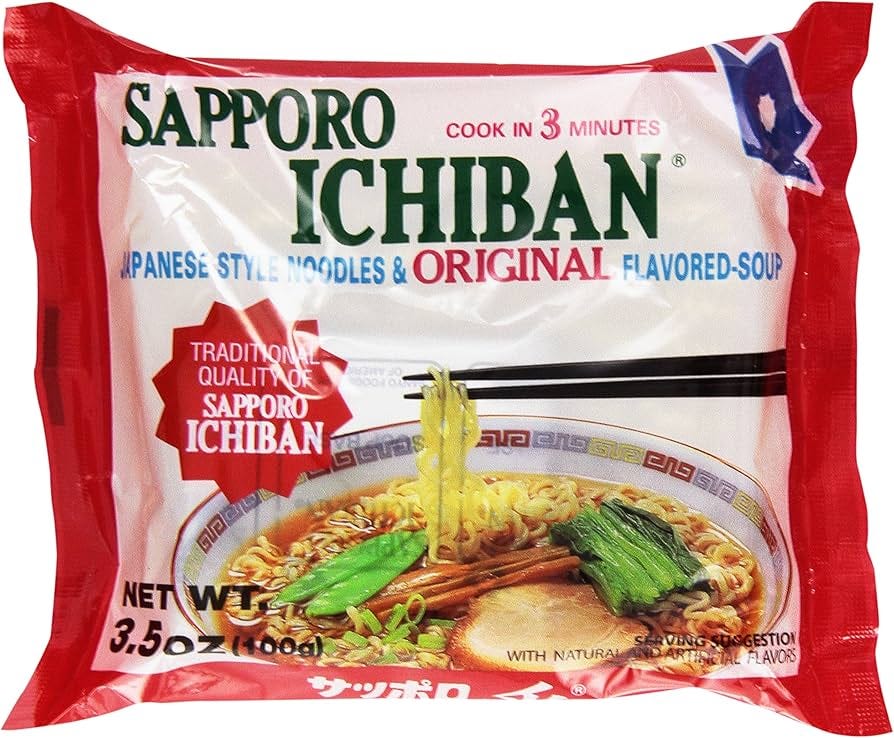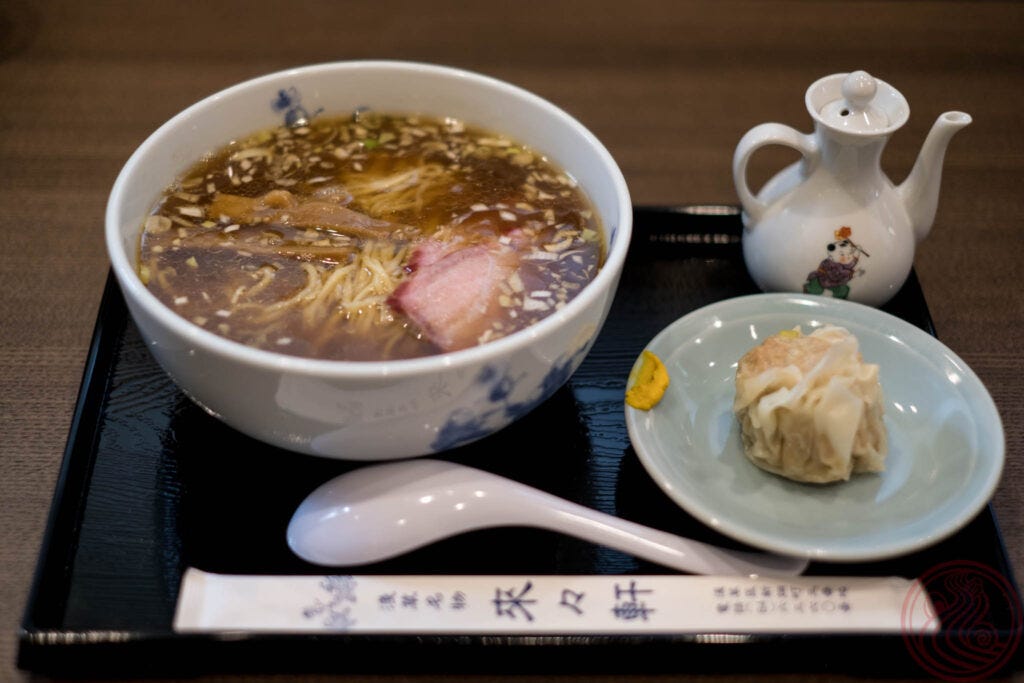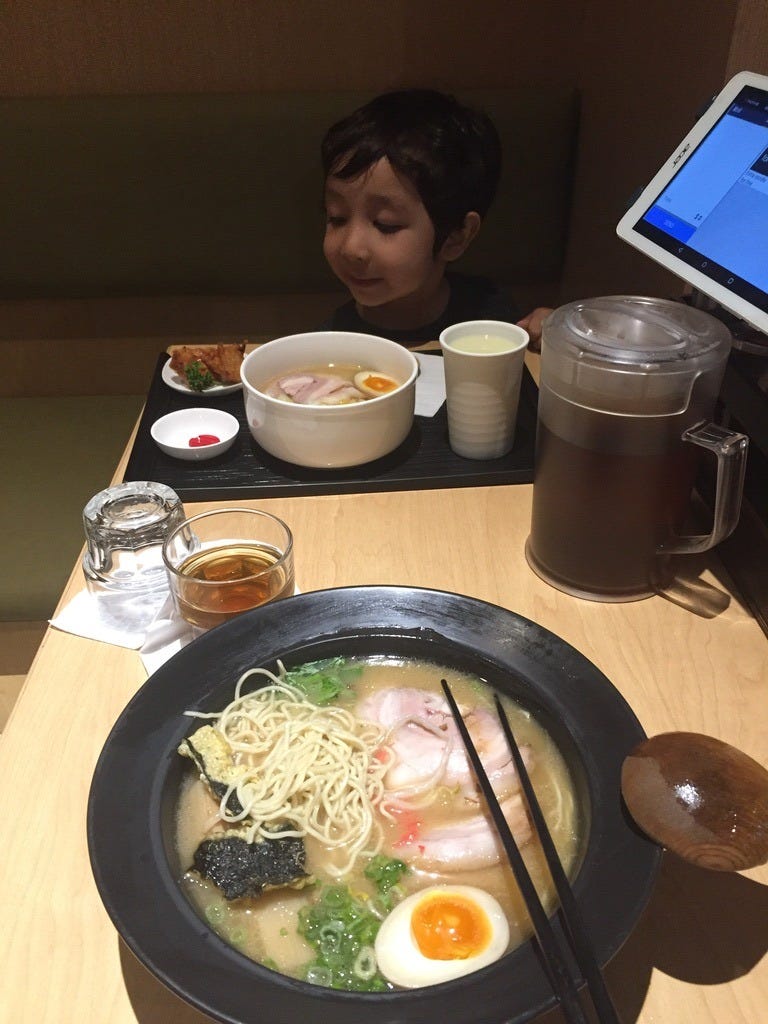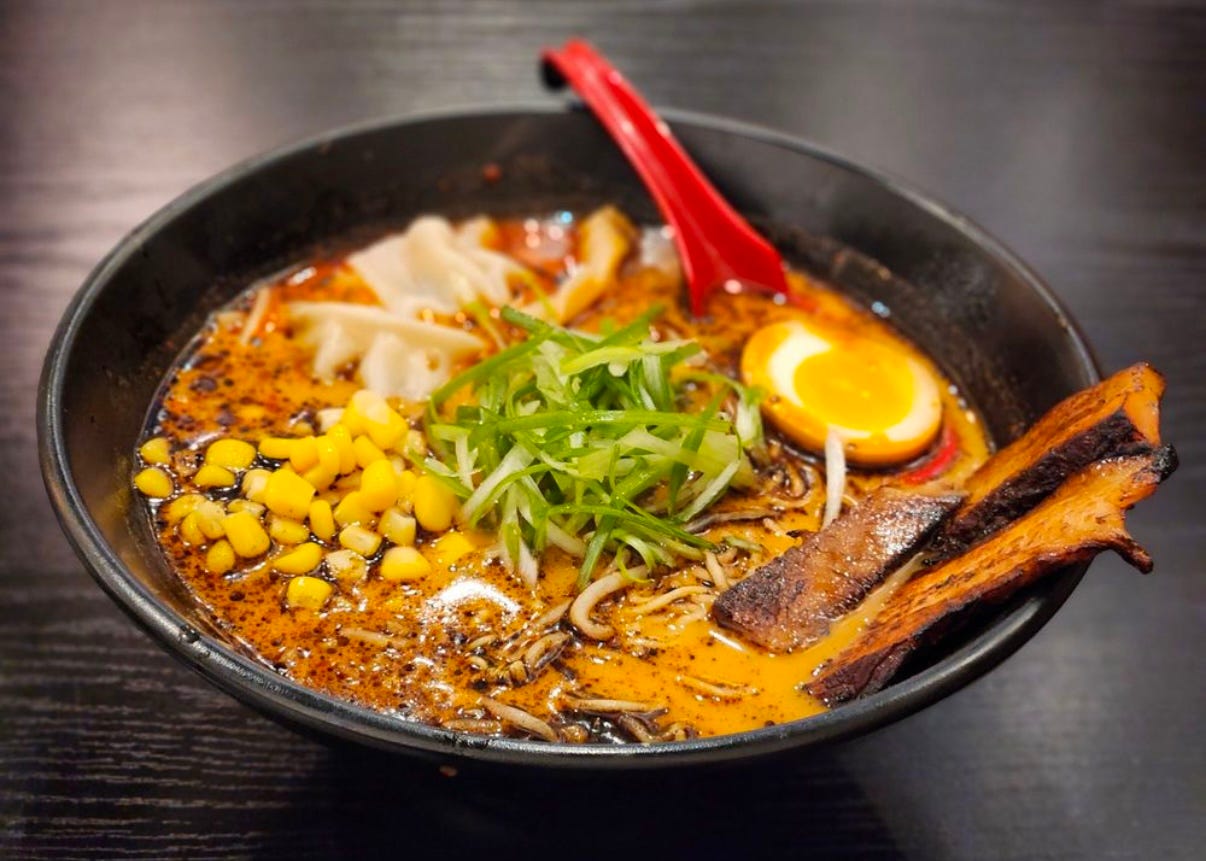Ramen, the Japanese Food that is Actually Chinese or Vice Versa
The story of a noodle that went from Guangdong to Yokohama and, from there, changed the world.
When I was a kid, we did most of our produce shopping at a Japanese-American market near our house.There is a long tradition of Japanese descendants farming produce in California, and even today many of the very best greenmarkets are run by Japanese-American families. Anyway, at this particular market they offered Japanese groceries along with the vegetables, and I vividly remember the bin displaying red packets of Sapporo Ichiban Ramen. I loved these ramen packets; and like many kids of my generation they were one of the first things I learned to cook for myself. After school, I would make a bowl of ramen with an egg, slurping the noodles hungrily in the kitchen before running out to play. Ramen was an inexpensive, satisfying convenience food, with a Japanese flair I didn’t really understand.
I didn’t think much more about ramen until I was a college student, when my girlfriend insisted we see a movie called Tampopo at the local art house cinema. The movie blew. my. mind. It was a film about food- the first I had ever seen- and it was clearly a commentary about Japanese cuisine. Oh, it was also a comedy, and an anthology film, with a meta-plot about a gangster and his moll who were watching the movie along with us. And it was definitely a western, except the setting was industrial 1980s Tokyo and the John Wayne character was a Japanese truck driver. And the movie is all about ramen, or rather about how a young widow (named Tampopo) transforms from being a second-rate ramen shop hack to an accomplished ramen chef. But this wasn’t the ramen I had grown up eating after school- this was another thing entirely.
The ramen of Tampopo was definitely working-class food: the disheveled ramen shops in the film were contrasted against the immaculate French and Italian restaurants of the Japanese bourgeoisie. But ramen was something else too- it was an object of passion for the main characters of the story, and the ramen cooks jealously guarded their recipes and secrets. And this was no supermarket instant ramen: the characters discuss the proportion of flour and lye in the freshly-cut noodles, the exact recipe of dried fish and meat in the broth, and the merits of various garnishes. The ramen of Tampopo was clearly an important and thoroughly Japanese thing.
But there was something that I just couldn’t put my finger on. It didn’t dawn on me until a couple years later, when I visited Japan for the first time and started eating at real ramen shops (there still weren’t any in San Diego yet). While eating, I noticed a strange thing about the décor of many of the shops- they had Chinese flourishes everywhere: hanging red lanterns, dragons in the bottom of the bowls, and those twisted Chinese borders on the menu. The places looked a lot like the Chinese-American restaurants back home. Some of the ramen shops even called the dish “Chuka Soba”, an odd Japanese word meaning “Chinese noodles”.
I eventually learned that ramen in Japan is, well, sort of Chinese food. The name “ramen” itself comes from a Chinese word for noodles- la mian (say it out loud and you’ll get it). The story is familiar to us Americans who have adopted immigrant foods as our own: beginning in about 1900, Chinese immigrants to Japan, mainly from the Guangdong province, settled in a “Chinatown” in Yokohama, just south of Tokyo. The neighborhood’s restaurants became a destination for curious Japanese, interested in the exotic tastes of another culture’s cuisine. One of these visitors was Mr. Konichi Ozaki, a Japanese policeman from the bustling Asakusa neighborhood in nearby Tokyo. He realized that a Chinese restaurant would be a perfect fit for his own neighborhood, since the area was already famous for its nightlife: an exotic restaurant might attract late-night customers. So, in 1910, he hired 12 Guangdong-born chefs from Yokohama Chinatown and opened a Chinese restaurant in Asakusa. He called it Rairaiken (来々軒), a phrase that roughly means “come in! come in!” in both Chinese and Japanese.
In Guangdong, the eating of noodle soup was already a big deal. Dishes like Wonton Noodle Soup (wantan mien, 雲吞麵) are very popular: it’s made of egg-rich noodles, with a bit of lye (kansui), cut thin. The soup is crystal-clear chicken broth, perhaps with a bit of pork. The noodles are served with wontons and, often, slices of char siu pork on top.
It was at Rairaiken in Tokyo that Guangdong-style noodle soup began its adaptation to Japanese tastes. The chicken-based soup was fortified with umami-rich Japanese ingredients like dried fish and seaweed, but the toppings like wontons and char siu pork were very Guangdong. The large, delicious portions of soup and noodles were popular, and the restaurant became a destination of its own. Rairaiken remained in business for 65 years- only closing and relocating for one year during World War 2. Finally, in 1976, lacking an heir in the family to run the restaurant, Rairaiken closed. However, in 2020, after 44 years of closure, the Ramen Museum of Shin-Yokohama revived the restaurant, serving original Rairaiken-style ramen once again. Rairaiken ramen is simple, but delicious: chewy, yellow noodles in a chicken-and-soy sauce broth served with lots of sliced scallions, some bamboo shoots, a slice of pork and a healthy-sized shu mai dumpling on the side.
In Tokyo, particularly after WWII, poor rice harvests and inexpensive wheat imported from the USA meant that noodles experienced a surge of popularity, especially among the working class. Noodle soup boomed. The descendant of Rairaiken’s noodle soup became called shoyu ramen, or “ramen with soy sauce”. In its classic form, shoyu ramen contains soy sauce seasoned chicken and pork soup, curly yellow noodles, a few slices of chashu pork, scallions, nori seaweed, bamboo shoots, and perhaps a slice of pink-swirled naruto fish cake 🍥. From Tokyo, noodle soup began to spread throughout Japan, taking on various regional ingredients and names. As ramen diffused, it became more Japanese and less Chinese in its execution and style: the bbq roast pork char siu became a braised pork called chashu. Japanese ingredients like miso, pickled ginger, and kelp began to appear in ramen bowls. Today, there are dozens of regional Japanese styles of ramen- from the cloudy, porky tonkotsu ramen of Kyushu in the South to the sweetish, buttery, corn-topped miso ramen of Hokkaido in the North.
Knowing this ramen history makes a rewatching of Tampopo even more dramatic. Turns out, as we first see it, Tampopo’s shop has the same Chinese flourishes I saw in Japan- I just hadn’t noticed them before. And its name is….. Rairaiken, the exact same name as the historic originator of Japanese ramen (this name is mistranslated in the English subtitles as “Lai Lai Ramen”). The implication is clear- Tampopo’s shop was classic, but old-fashioned and out of style; her shoyu ramen was boring and retro. The arc of her character is one of liberation; she becomes stylish, creative, and cosmopolitan, throwing off the yoke of tradition. In the end, her ramen shop, renamed “Tampopo”, is remodeled in the French style and she dresses in the uniform of a French chef. She, and her restaurant, have gone international.
Ramen itself underwent a similar arc. Around the same time as the movie- and perhaps fueled by it- ramen became celebrated internationally, and ramen shops started popping up in New York, Paris, and even Shanghai. Ramen had gone from being a Chinese-Japanese curiosity to a regionally-diverse working class Japanese food to a hip, stylish, trendy international sensation. And, over time, the dish has continued to evolve and adapt. You can get elegant duck matcha ramen in Singapore, and Mexican-inspired Birria Ramen in California.
In its international hipster version, ramen seems to have forgotten its Chinese roots. Gone are the dragon bowls, Chinese lanterns and clear soups; broths trend towards the intense flavors of pork bones and garlic, served in upscale, handcrafted bowls. International ramen shops aren’t simple working-class restaurants, they are trendy and stylish, with thumping music and modern décor. It’s almost impossible to find old-school Tokyo-style shoyu ramen abroad- international ramen is sexier, more luxurious, and wildly diverse.
That’s why, when I go to Japan, I seek out the old-school shops serving classic shoyu ramen (bonus points if they call it chuka soba). This is the ramen that retains its Chinese-Japanese foundation, reflecting a mixture of cultures from a couple of port cities over a hundred years ago. Pretty cool.
* * *
If you want to watch Tampopo, and I recommend it, you can see it here (you’ll have to turn on captions for subtitles).

